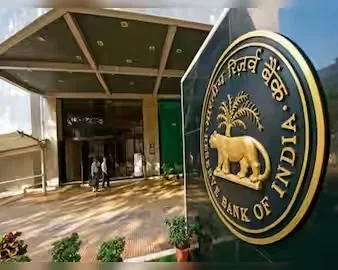New Delhi, – The Reserve Bank of India (RBI) is poised to deliver another substantial surplus to the Central Government for the fiscal year 2024-25, with estimates ranging between ₹2.6 lakh crore and ₹3 lakh crore. This transfer, expected to be finalized at the RBI’s Central Board of Directors meeting on Friday, May 23, would mark a new record, surpassing the previous high of ₹2.10 lakh crore transferred in 2023-24.
The surplus, which represents the excess of the RBI’s income over its expenditure, is a critical financial boost for the Central Government. The RBI generates its revenue primarily through interest on emergency loans to commercial banks, returns on investments, and profits from the sale of dollars from its foreign exchange reserves. For FY 2024-25, the central bank’s income has been significantly bolstered by its forex operations. Reports indicate that the RBI sold $375 billion from its reserves by February 2025, a sharp increase from the $150 billion sold in 2023-24, which had yielded a profit of ₹83,614 crore. With the rupee’s value against the dollar fluctuating between 83-84 for acquisition and 84-87 for sales, the RBI has earned a profit of up to ₹4 per dollar, contributing to the anticipated bumper surplus.
The RBI’s expenses, which include staff salaries, the cost of printing currency notes, and fees paid to banks and financial institutions for managing government transactions, are deducted from its total income to arrive at the surplus amount. As per Section 48 of the RBI Act, 1934, the central bank is exempt from income tax, allowing it to transfer the entirety of its surplus to the government after provisions.
Historically, the RBI’s surplus transfers have varied significantly. In 2018-19, the transfer stood at ₹1,76,051 crore, dropping to ₹57,128 crore in 2019-20, rising to ₹99,122 crore in 2020-21, and dipping to a low of ₹30,307 crore in 2021-22. The amount increased to ₹87,416 crore in 2022-23 before reaching ₹2,10,874 crore in 2023-24. Under the Modi government, the surplus transfer as a percentage of GDP has risen to 0.5-0.55%, compared to just 0.1% during the UPA regime, reflecting a strategic push to leverage RBI funds for fiscal management.
Economists anticipate that the RBI may also increase its Contingency Risk Buffer (CRB) this year, potentially adjusting the range from the current 5.5-6.5% to 5.5-7.5%. The CRB is maintained to address unforeseen financial shocks, and despite a possible increase in this buffer, the RBI’s improved revenue stream is expected to ensure a record transfer to the government. The central bank’s proactive measures, such as dollar sales to mitigate rupee depreciation and liquidity enhancement in the market, have significantly boosted its income for the fiscal year.
This substantial surplus is a major relief for the Central Government, enabling better control over the fiscal deficit and providing funds for welfare and development projects. With the government facing pressures from weak tax revenues and sluggish private investment, the RBI’s transfer will offer crucial fiscal flexibility, potentially reducing the need for market borrowings and supporting economic growth initiatives. As the RBI Board prepares to meet, all eyes are on the final figure, which could redefine the financial dynamics between the central bank and the government for the year ahead.




.png)
The opinions posted here do not belong to 🔰www.indiansdaily.com. The author is solely responsible for the opinions.
As per the IT policy of the Central Government, insults against an individual, community, religion or country, defamatory and inflammatory remarks, obscene and vulgar language are punishable offenses. Legal action will be taken for such expressions of opinion.